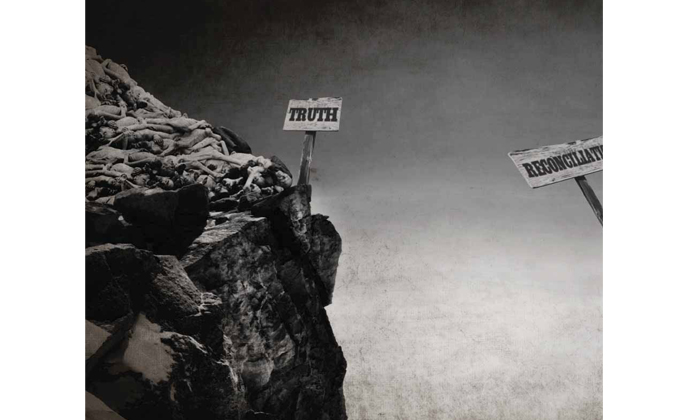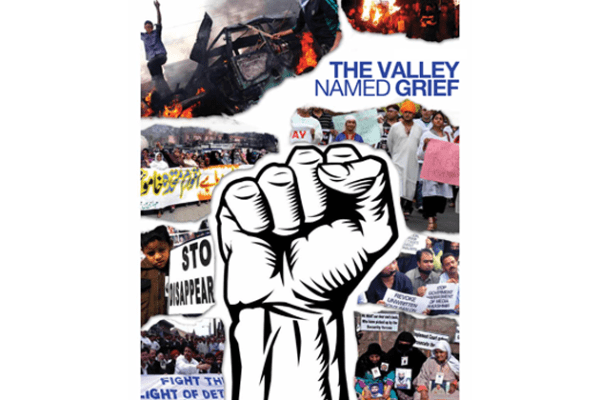Two years ago the International People’s Tribunal on Human Rights and Justice (IPTK) came out with the shocking report ‘Buried Evidence’ of 2700 unknown, unmarked, and mass graves, containing 2943 bodies, across 55 villages (in 62 sites within these villages) in Bandipora, Baramulla, and Kupwara districts of Kashmir. Of these, 2373 were unidentified and unnamed graves, according to the IPTK. The State Human Rights Commission took cognizance of this report and ordered an investigation. The report, however, was leaked in the media last month, revealing that the SHRC investigation panel admitted that there were 2156 graves in 38 graveyards (something close to the IPTK claims), bringing to fore one of the many puzzles about Kashmir’s armed conflict. This time, over raised mounds and some numbers, used to mark the graves. Who are these people, mathematically named, who lay buried in these graves close to the Line of Control? Are they some unknown foreign militants who crossed the borders and were killed in encounters? Or are they graves of people killed in fake encounters, mostly people who were picked up and disappeared in the custody of army, para-militaries and police?
Skepticism stems from multiple factors. For one, the case of unmarked graves is not the only sign of human rights abuse in Jammu and Kashmir.
When the IPTK came out with the report in December 2008, it maintained that the bodies may have been of people who have been missing in custody for years. SHRC report has almost endorsed that view, seeking a full investigation with DNA profiling of all the persons buried in the graves as well as of the families of the missing men. Justice/Human Rights Forum chairman, Mohd. Ahsan Untoo hopes that SHRC would widen the scope of its investigation since the team has only visited unmarked graves in Lolab area and claims that the figures may be much higher. He has already written to SHRC and forwarded his list of documented unmarked graves and fake encounters. He quotes one such incident in his letter, “In Devar village of Lolab area, we have documented 37 cases of fake encounter killings, where 33 local civilians were killed in fake encounters and branded as foreign militants.”
However, Association of Parents of Disappeared Persons (APDP) has taken a different position. Its chairperson Parveena Ahangar says that without evidence, “we are unwilling to believe that our sons are dead and lie in these graves.” She maintains that while there is likelihood that some missing men may have been killed in fake encounters and passed off as foreign militants, and may be lying in those graves, there is also a possibility that some of these graves do belong to unidentified foreign ultras who came from across the borders.
There is only one way to solve the puzzle – thorough investigations. Chief minister Omar Abdullah, acknowledging the issue of graves during the recently held National Integration Council meeting in Delhi called for setting up Truth and Reconciliation Commission (TRC) on the unmarked graves. This indicates some seriousness in the official circles about the report. Would this mark a new beginning in Kashmir, where human rights abuse has always been responded to with denials or a pack of lies?
Past experiences cast a shadow of doubt on the sincerity of any initiative, if at all taken up. For years, the State and its machinery has been unable to accept the existence of human rights, has dragged feet over investigations or completely tampered with evidence to hush up cases, or at best handpicked the culprits in uniform and dismissed the cases with mere suspensions or remarks like ‘guilty of misconduct.’ As in the Mubina Gani rape case. In May 1990, Mubina Gani, a bride being taken along with her groom and baratis after the marriage was solemnised, was raped in south Kashmir by BSF. Her aunt, accompanying the marriage party was raped too. One man was killed and several wounded. A government inquiry held the BSF men guilty but the latter were never prosecuted. However, a BSF Staff court of inquiry that held the men guilty, “suspended seven men.” Normally, a person convicted for rape could get upto ten years in prison if the normal Indian legal procedures are followed.
The army personnel and BSF, guilty of crimes of human rights violations, take refuge under the extra-judicial powers bestowed upon them under the Armed Forces Special Powers Act. A pack of lies is all it takes to save the neck of the state police and the central reserve police force (CRPF). In the Shopian rapes and murder case of 2009, too many lies were woven officially to bail out the policemen, clearly accused of tampering with the evidence, to obfuscate the truth forever. A year after the 2010 summer agitation, in which 120 persons were killed during protests, no prosecution has taken place. FIRs are lodged only in cases whose families pursued the matter in courts. One such case is that of a teenaged boy Tufail Mattoo. In February 2011, the judicial magistrate maintained that a cop had been arrested in the case on basis of identification by an eye-witness. The police, however, continue to deny till date that the arrest took place. A film of mystery shrouds each and every case of killing, torture, custodial disappearances and rapes.
When peaceful campaigns for justice meet with indifference, brutal action (to the extent that even a memorial raised by APDP in memory of the disappeared was bulldozed) and propaganda labels them as events sponsored by separatists and militant groups, there is little hope for change or any fair investigation. The very suggestion, put forth by the SHRC report on unmarked graves, of preparing DNA profiles of all those buried in the grave and of all the killings stares in the face of the absurdity of countless fudged DNA stories. DNA samples of young men killed in Pathribal fake encounter, close on the heels of Sikh killings in Chattisinghpora in March 2000, sent to forensic laboratories turned out to be those of women. In the Surankote fake encounter killing, less than two months ago, the DNA samples rotted on way to the forensic laboratories. There are multiple conflicting reports based on the entire medical evidence in the Shopian rapes and murders. In a state where DNA and all other medical evidence remain mired in mystery, it is wishful thinking that strictures of a toothless Commission for human rights can change the course of the investigations in human rights violations. Every year, since the last one and a half decade, the SHRC comes out with its annual reports, making recommendations in several cases of abuse. None of them has been implemented till date.
So, does Omar Abdullah’s concern and proposal imbue any hope? Quite unlikely. Skepticism stems from multiple factors. For one, the case of unmarked graves is not the only sign of human rights abuse in Jammu and Kashmir. Second, for many victims, reconciliation may not be the course of justice they are seeking. Thirdly, truth, that has always remained a casualty, is the basic component of Truth & Reconciliation Commission. Mystery mires each and every case of human rights abuse in the state, including those perpetrated by militant groups. The more time it takes to investigate them fairly, the more difficult it would get to sift fact from the complicated mesh of rumours, fake or tampered evidences, and propaganda. As Robert Fisk writes about war crimes in Iraq, ‘It is not the brutality that is systematic. It is the lying about it.’ The only known fact is that there is a systemic pattern to stonewall truth about each case of killing and torture. Truth, like the identity of those in the mysterious graves, remains buried. Forever. Only a commission that has the powers and independence to probe each case without being hamstrung with the need to ‘protect the honour’ of the security forces can allow it to be unravelled.














